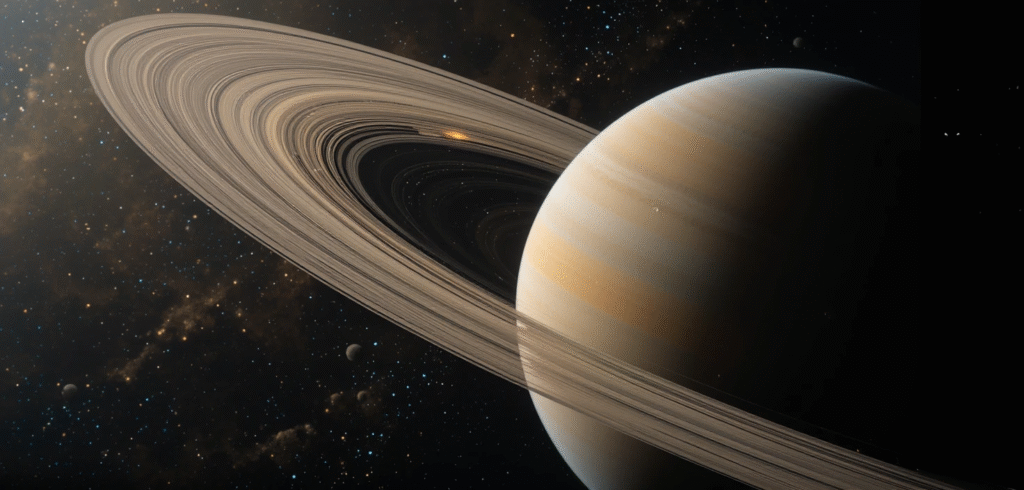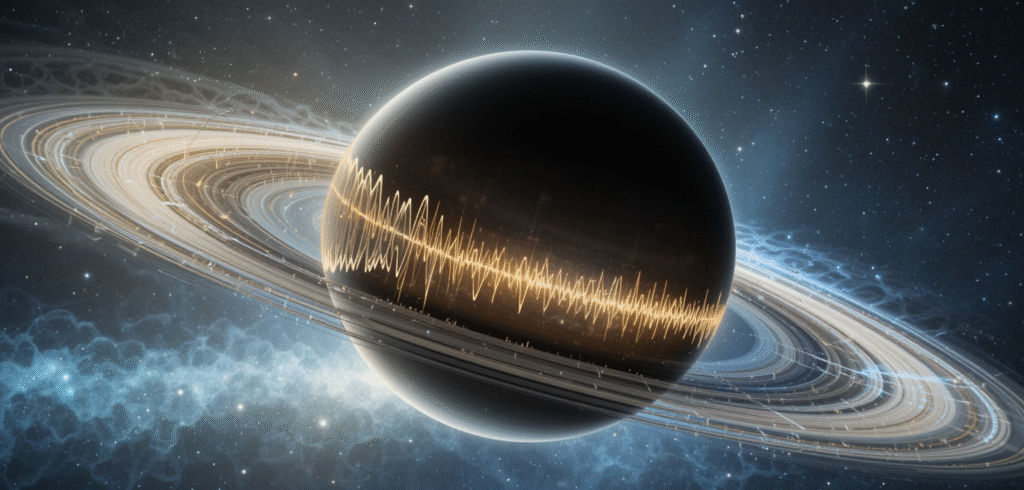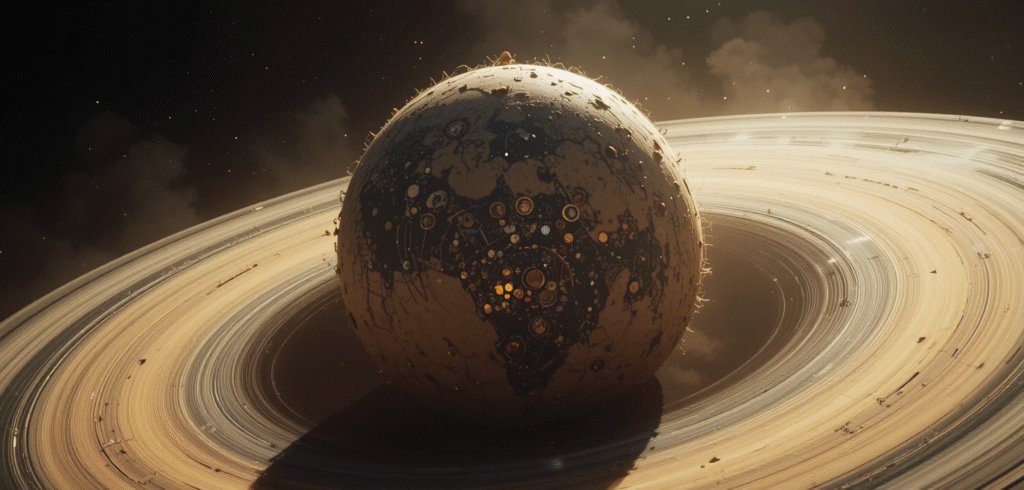
How Can We “Hear” Space?
First a key clarification: sound waves cannot travel across space since it lacks the medium of air. However, by measuring electromagnetic and plasma wave activity and converting it into audible audio, Cassini was able to capture what we commonly refer to as “sounds.”
The Radio and Plasma Wave Science (RPWS) instrument on Cassini captured changes in the radio frequencies and plasma oscillations that occur in Saturn’s atmosphere. In order to make these frequencies audible to humans, scientists moved them downward, frequently by quantities like 5× or even 260×.

Eerie Radio Emissions from Sa
As early as 2002, Cassini detected strong and unsettling radio emissions from Saturn’s auroral regions. Similar to Earth’s Northern and Southern Lights, these were associated with planetary auroras and appeared as eerie, droning sounds when audified (space-audio.org).
NASA Science.
Three rising tones appear from a more stable baseline frequency in an early NASA audio, demonstrating intricate wave interactions in Saturn’s radio source region and possibly reiterating patterns observed in Earth’s magnetosphere (NASA Science).
With the help of spectrograms that accompany such audio, one may “see” the noises Cassini heard by observing complex patterns in both frequency and time.
Saturn Enceladus Plasma Wave Interaction: A Celestial Audio Dialogue
Only a few weeks prior to its last plunge, on September 2, 2017, Cassini’s RPWS instrument captured an amazing interaction: plasma waves moving between Saturn and its moon Enceladus.
They produced a captivating “whooshing” sound by amplifying these plasma waves, which are oscillations of charged particles. The procedure involved compressing 16 minutes of real-time data into a 28.5-second audio clip and reducing the frequencies by a factor of 5 to make them audible.
NASA Science at JPL.
Listeners were able to experience the cosmic “call and response” between a planet and one of its moons through this recording, which provides a powerful auditory example of electromagnetic connectedness throughout space.
Cassini’s Grand Finale: Diving into Saturn
In order to prevent contaminating potentially habitable moons like Enceladus and Titan Time, Cassini concluded its mission on September 15, 2017, by purposefully plunging into Saturn’s atmosphere.
The New Yorker.
Instead of producing audio “sounds,” the spacecraft streamed real time data from eight science instruments during this dramatic descent. These observations included air composition, magnetic field, and more NASA Science TIME.
These are Cassini’s last “voice” its last scientific messages before its signal went out even though they were not audio recordings.
Why It Matters (Beyond the Sound)
Cassini’s audified recordings offer both dramatic and scientific value:
Scientific Significance
Describe the plasma and electromagnetic processes that occur in Saturn’s ring system and magnetosphere.
Give information on the ring gap environment’s structure and makeup.
Show how Saturn and Enceladus interact dynamically with plasma.
Public Engagement
These recordings bridge the gap between cosmic activity and human perception by transforming electromagnetic, unseen phenomena into something tactile. According to one source, the noises are remarkably realistic yet resemble “whistling, epic whooshing, and warbling echoes” that would be appropriate for a science-fiction movie.
Legacy & Inspiration
Before its dramatic, self-sacrificing conclusion, the sounds perfectly capture Cassini’s legacy: pushing the boundaries of science, exposing the unexplored space between Saturn and its rings, and capturing a close link between Saturn and a potentially livable moon.
Human Reactions to the Sounds of Saturn
People all throughout the world were in disbelief when NASA made the tapes public. Many people said the noises were enigmatic, eerie, and lovely almost like the soundtrack of a science fiction movie. Others found them disturbing, as if the world itself was alive and whispering secrets, while others compared them to extraterrestrial music.
The recordings also serve as a reminder of how insignificant we are in relation to the cosmos. In addition to imparting scientific knowledge, Cassini allowed humanity to “listen” to another world by transmitting its last data before exploding in Saturn’s atmosphere.

Legacy of Cassini’s Sounds
Despite Cassini’s 2017 mission termination, its data remains inspirational. Researchers continue to examine its plasma recordings, contrasting them with fresh discoveries from spacecraft like Voyager or Juno at Jupiter.
The “sounds of space” demonstrate how science and art frequently coexist. Cassini provided humanity with more than just knowledge by transforming plasma waves into auditory signals; it let them to hear Saturn’s voice over billions of kilometers.
Conclusion
After all, the universe is not silent. The recordings made by Cassini serve as a reminder that planets, stars, and habitats filled with plasma continuously emit signals that we have yet to discover. We will undoubtedly continue to uncover new cosmic symphonies as NASA and other space organizations get ready for upcoming trips to the outer planets.
More than just the conclusion of a mission, Cassini’s dive past Saturn served as a reminder that the universe may still communicate with us even in the void of space.



